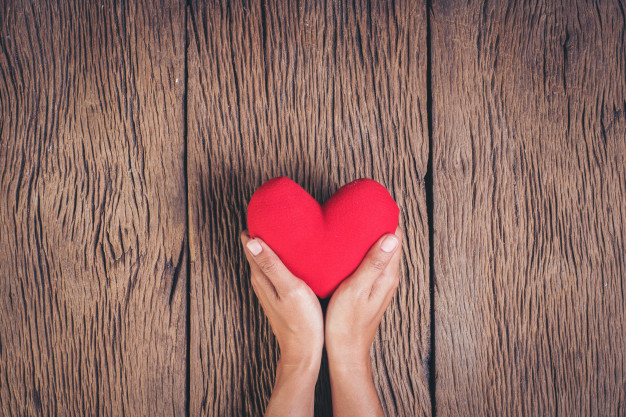At Oaks Christian Online we require our full-time students to complete twenty hours of community service per year. Historically students have built homes and orphanages; they have volunteered at animal and homeless shelters, food banks, churches, non-profits, schools, senior citizen homes, and the like.
This semester presented a new challenge to complete community service while under quarantine. Students had to consider what it might look like to care for and serve others without sharing geo-physical space with them. They had to think about what adjustments would need to be made in order to serve their community members from a distance.
We may wonder if onlookers of Jesus asked themselves these same questions when he encountered a group of lepers as recounted in Luke 17.
In Jesus’ day, many believed that leprosy was contagious and so it was normal to use additional cleaning and distancing practices in order to prevent spreading. (Note: It is not clear how contagious leprosy actually is, but in this place/time it seems many at least thought it was.)
So in Luke 17 when Jesus decides to travel to Jerusalem “along the border between Samaria and Galilee” (11) and in doing so engage with some lepers, there is a lot to consider. Geographically they are on the border, belonging neither to Samaria nor to Galilee. We might speculate that they are clustered together in isolation from their community for public health reasons. For better or worse, this, of course, had psychological and emotional repercussions. In addition to their physical isolation, lepers also experienced social and spiritual out-casting. From being sick and perhaps contagious, they suffered all the despair of a life in quarantine. The text tells us they were at the border, but we can infer that they were also on the margin.
As to be expected, these lepers want Jesus to heal them. The lepers in this story, “stood at a distance and called out in a loud voice” for help (12). It is interesting to note here that while the lepers do self-advocate for healing, they do not break quarantine to do it. Instead of coming closer to Jesus, they present their request from a distance, raising their voices in order to be heard.
And perhaps also as to be expected, Jesus will in fact heal them. But what is fascinating is the unique way Jesus performs this particular healing.
Jesus respects their distance and yells back with instructions to let the priests see (not touch) them and in doing so, enact their healing (14). Swinging the priests into the healing work is most likely a strategic move to make sure the lepers’ healing is not only physical but social and spiritual as well. They are to be seen again. And not just by anyone, but by religious leadership. They are no longer to be ignored.
Only at this point does the physical distancing end. Only after they have been healed, does a leper “throw himself at Jesus’ feet” in gratitude (15). In this story, touch is not an agent of healing and restoration, but an act of thanksgiving and celebration after healing has taken place.
The actual healing work is done from a distance.
Now, why doesn’t Jesus just go for it and bring healing through touch as he so often did? Why not extend a hand to these lepers like the leper in Matthew 8:3? Wouldn’t that have been an even more redemptive act? Wouldn’t that have been even more miraculous and even more subversive? Wouldn’t that have been an even better story?
It’s hard to say. But that’s simply not the story we have here.
In this story, what we find is that, for whatever reason, Jesus respects their quarantine while still meeting their need. Jesus decides that this social, physical, and spiritual act of service and compassion can happen from a distance. Speaking and seeing (not touching) will be his tools of redemption this time.
I wonder if there is comfort for us, perhaps, in knowing that Jesus is not out of commission during quarantine. Jesus is not waiting until his cloak can be touched (Mark 9:20-21), or until he can touch someone’s eyes (Mark 8:25), or until he can lay hands on people (Luke 8:15) to heal and to serve.
Even from a distance, Jesus can do what Jesus needs to do.
What does this mean for us as Christians in this time? Is our ministry and service on hold until the quarantine is over? Is it not ‘real’ until we can stand side by side and hold one another? Can we find hope in knowing that service and healing and restoration can happen, even when physical space cannot be shared?
As it turns out, our student population is a great resource for addressing some of these questions.
Some of them decided to defer all of their community service hours until next semester in hopes that they will be able to go back to some of the more conventional ways of serving. For them, the task of reconfiguring community service did not sound engaging. They are doing what is best for them; they are practicing the discipline of waiting in times of uncertainty.
Still others, however, decided they would reimagine community service in these unique times. They grew passionate about the ways we can continue to love and care for others from a distance. Presented below are a few of their stories of creativity and compassion. May they bring you hope and inspiration during this time of quarantine:
Our dance studio shut down. Many students could not dance, but our studio found a way to bring it to them at home. I filmed various videos, assisting teachers so that students could see the combinations and take them from home on their own time. This kind of service is very important to me because I believe that dance truly makes kids happy, and they should be able to dance. Although I could not see the students dancing from home, I hope that dancing from home made them happy in these uncertain times, and that it might have grown their love of dance from home. –OC Online Senior
Due to Covid, there weren’t any options for [in person] service, but I found a great one [for remote service]. I made blankets for children who are removed from their homes due to difficult situations. I did the blanket making for ten hours over the semester. It helped me practice the discipline of service and spread God’s love through charity. –OC Online Junior
I edited and directed a video for the LucStrong Foundation; they did a kick it challenge fundraiser. One of my really close friend’s brothers died from complications during a bone marrow transplant that was meant to cure him of sickle cell anemia. The whole foundation raises awareness for it and raises money for research and aid for those families who are battling sickle cell anemia or who are going through a bone marrow transplant. –OC Online Junior
I held a charity donation for masks and PPE. My dad knows someone at In N Out and so [he lent us a food truck] and basically [we set up] a drive through in front of my house. Someone would come and they would donate two masks in exchange for a single burger. And we ended up collecting 4,000 masks. The masks ended up going to the UCLA Rape Foundation and from there they spread it out to a lot of different families. The whole reasoning why I was thinking about [doing this] was at that time masks were totally sold out and started to get really expensive. And so I thought if we could have a donation then people from different socioeconomic backgrounds could get a mask without having to spend a [sizeable] part of their budget. You can read about it here –OC Online Senior
Surely there is a future, and your hope will not be cut off. (Proverbs 23:18)









